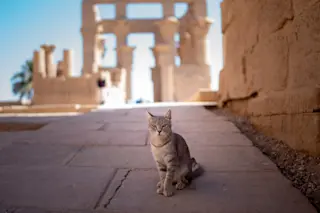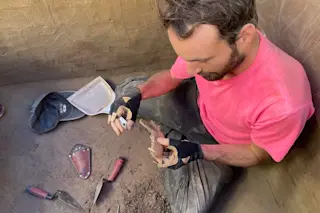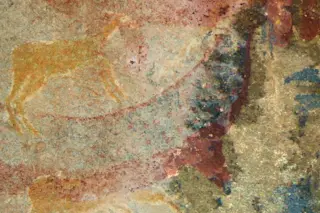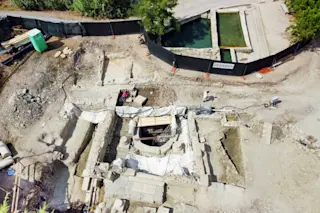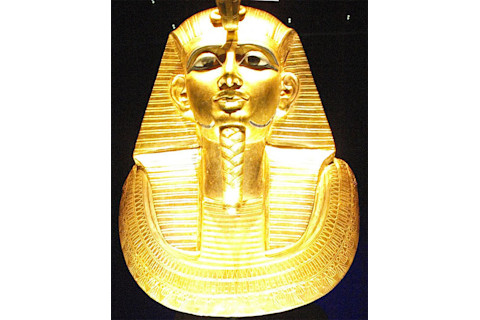
With the world focused on the uprising against Egyptian President Hosni Mubarak, archaeologists have raised the alarm about Egypt's ancient treasures. Last Friday, looters destroyed some artifacts in the Egyptian Museum in Cairo, home of over 120,000 priceless artifacts, including many from Tutankhamun's tomb. Other museums have also been ransacked--but in one uplifting moment, citizens and army personnel banded together to save Egypt's past. Although some of the Egyptian Museum looters were reportedly apprehended, the damage was already done: the criminals beheaded two mummies thought to be pharaohs, reduced to rubble a statue of the young King Tut astride a panther, and damaged many other treasures.
The country's top archaeologist, Zahi Hawass, described the damage in a series of statements, including an update that was posted to his blog on Sunday. He said looters ransacked the museum's gift shop and went on to vandalize authentic treasures as well. More than a dozen display cases were broken into, including one that contained the Tut statuette. "The criminals found a statue of the king on a panther, broke it, and threw it on the floor," Hawass wrote. "I am very thankful that all of the antiquities that were damaged in the museum can be restored, and the tourist police caught all of the criminals that broke into it." [MSNBC]
There's a big difference, though, between "can be restored," and "easily restored."
"A lot of the things that were broken off were gilded wood, so I think they were after gold," UCLA Egyptologist Willeke Wendrich told National Geographic News.... "The restoration of those objects, even if all the parts are still there, will be very difficult, time consuming, and costly," she added. "This is really fragile wood." [National Geographic]
Despite the damage to Egypt's past, much more looting was thankfully prevented, thanks to groups of civic-minded citizens. At the Egyptian Museum, people formed a human wall to protect their country's treasures:
As the fire raged, would-be thieves started entering the grounds surrounding the museum.... But other young men, some armed with truncheons taken from the police, formed a protective human chain outside the museum's main gates. "I'm standing here to defend and to protect our national treasure," one of the men, a 40-year-old engineer named Farid Saad, told AP. [MSNBC]
Other museums, though, were not as lucky as the Egyptian Museum:
The open-air museum in Memphis—a capital of ancient Egypt just south of Cairo—was emptied of its treasures, according to antiquities chief Hawass.... While an inventory of items damaged or stolen at Memphis is not currently available, the site is famous for its large statue of Pharaoh Ramses II and other sculptures. [National Geographic]
And even amidst the clamor of looting, old tensions over the repatriation of Egyptian artifacts still linger. In an op-ed article, Middle East archaeologist and historian Alex Joffe questioned whether Egypt can look after the artifacts it already has.
"These events make Mr. Hawass's quest to return all Egyptian objects to Egypt misguided or at least poorly timed. Last week he again demanded the return of the bust of Nefertiti from Berlin. The Rosetta Stone in the British Museum has long been on Mr. Hawass's wish list, along with the Zodiac Ceiling in the Louvre and statues in Boston's Museum of Fine Arts and museums in Hildesheim, Germany, and Turin, Italy." [The Wall Street Journal]
Related Content: 80beats: How Egypt Shut Down the Web—and How Egyptians Are Fighting Back 80beats: Blackout: Egyptian Internet Taken Offline by Government Crackdown 80beats: X-Rayed Mummies Reveal That Ancient Egyptians Had Heart Disease 80beats: Egyptian “Scorpion King” Made Medicine from Herbs & Booze 5k Years Ago DISCOVER: Making a Modern Mummy
Image: flickr / fmerenda



